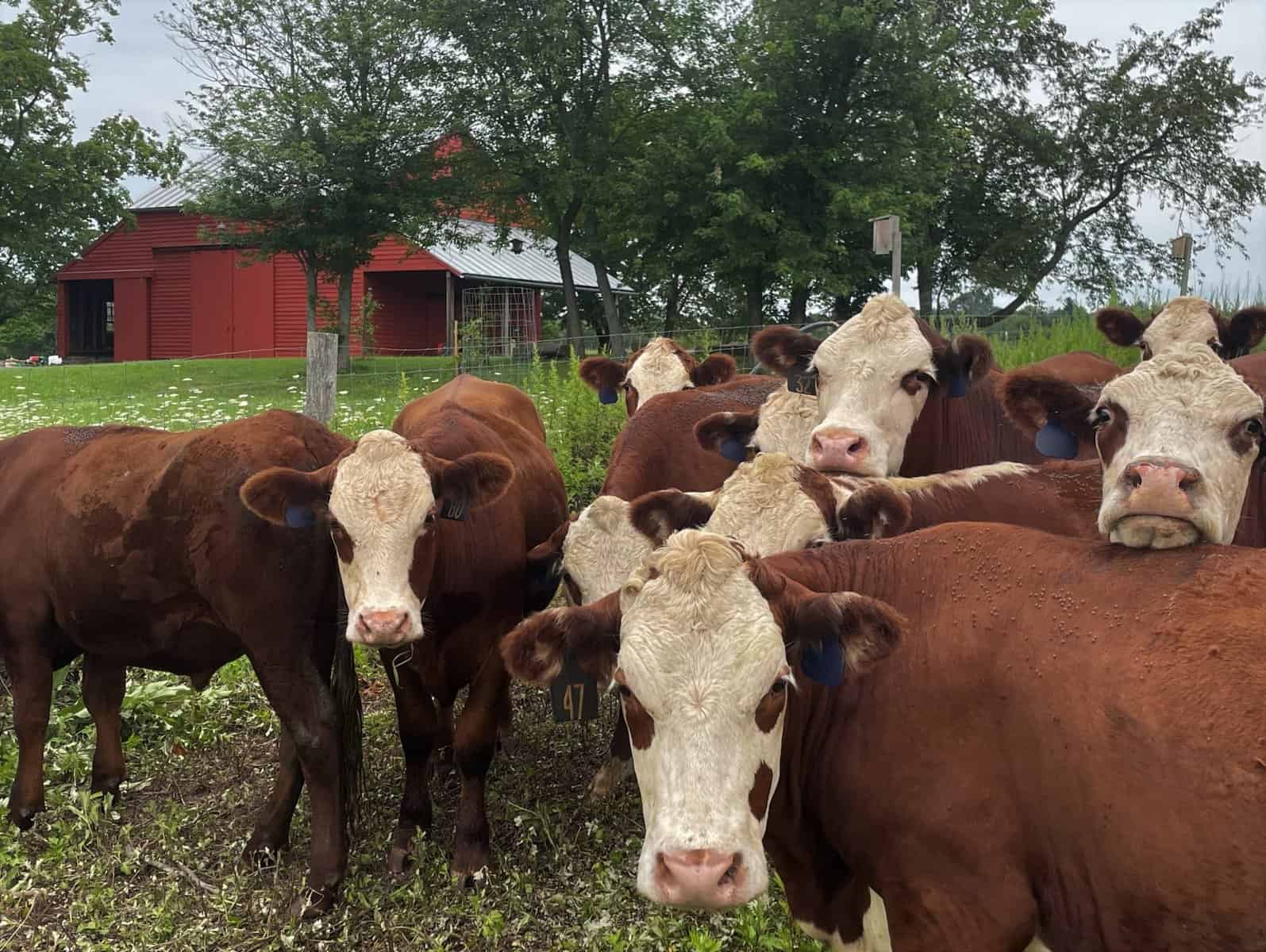Fifteen cows made St. Michaels Farm Preserve in Hopewell their new home as of Aug. 3, already grazing on a diverse mix of forage grasses and legumes planted by Soil Carbon Partners (SCP).
Beginning in early spring 2021, SCP, led by managing member Ed Huling, applied a special mix of organic materials to 50 acres of farm fields on the D&R Greenway’s St. Michaels Farm, according to information provided by D&R.
Based on 20 years of SCP’s research and refinement, this soil mix contains abundant minerals, organic matter and beneficial soil organisms, according to the statement.
In the first two months following the application of soil enrichment materials, the dry weight of newly planted forage grasses is already 300% greater compared to control plots, according to the statement. Growing more food on less land is essential for combatting climate change, because if food production per acre could be significantly increased, we would no longer need to cut down forests to feed a growing population, according to the statement.
Recent Princeton research proves that forests powerfully cool the planet. The authors, Sara Cerasoli and Amilcare Porporato, recently published their breakthrough research on the cooling effect of forests in the Proceedings of the National Academy of Sciences, according to the statement.
The third milestone in SCP’s three-part climate mitigation program, along with soil restoration and higher forage crop productivity, was bringing 15 Hereford and Devon cattle to graze on the fields. Over the course of history, cows, buffalo, elk, and other grazing animals eating grass on pastures sequestered hundreds of billions of tons of atmospheric carbon in soil around the world. By doing so, these grazing animals have been key players in keeping the earth cool for tens of thousands of years, according to the statement. They are just as important now to keeping the grass trimmed, and actively drawing down carbon dioxide from the atmosphere and sequestering it in soil, according to the statement.
A unique feature of their fenced pasture is a movable “cow umbrella” which shades the cattle from hot summer sun, according to the statement.
“We are very grateful for D&R Greenway Land Trust’s ongoing and active support of this Climate Project through use of their fields and managing their land to accommodate our farming activities. We also appreciate the warm welcome, curiosity and understanding shown to us by community members,” Huling said in the statement.
Through local connections, these first cows to arrive to the preserve came from Charlie and Lucia Huebner’s nearby Beechtree farm in Hopewell, provided for this key phase of research, according to the statement.
“Eleven years ago, when D&R Greenway opened the St. Michaels Farm Preserve, the cattle of Jon and Robin McConaughy’s Double Brook Farm were pastured upon these same fields where the new Herefords and Devons graze today. We have missed seeing cows on the fields since they were moved away these past 5 years. You could say we’ve been waiting ‘til the cows come home,’ “ D&R Greenway CEO and President Linda Mead said in the statement.
Three independent advisors from leading universities are measuring results of this scientific project. In weeks to come, they will monitor the cattle’s individual weight gain, expected to surpass that of cows grazing upon conventional grasses today, according to the statement.
Throughout the Climate Project, SCP will continue to manage grazing patterns at St. Michaels Farm, to optimize grasses’ ongoing sequestration of carbon.
The ability to sequester carbon in farm and forest soils is increasingly recognized as a key strategy for helping slow climate change, according to the statement.
For more information, visit https://drgreenway.org/

